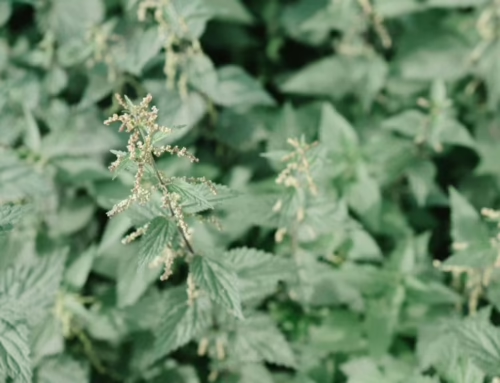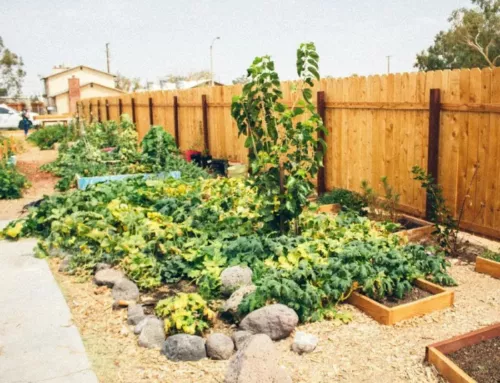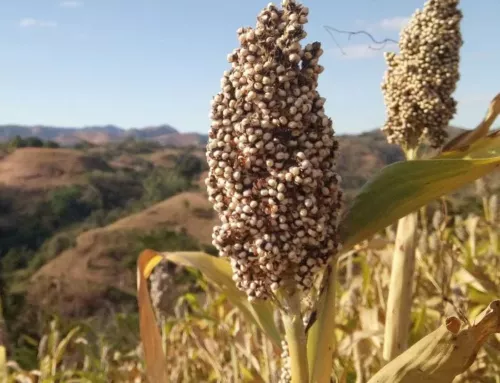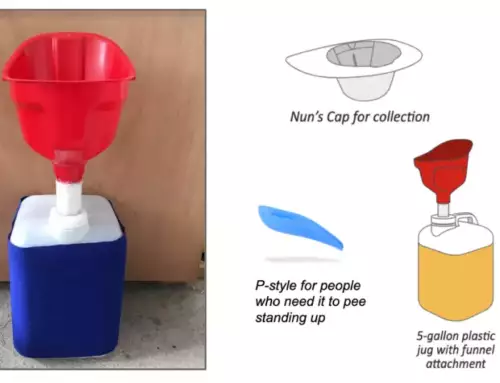By Christine Manuck, NOFA/Mass Soil Health Projects Manager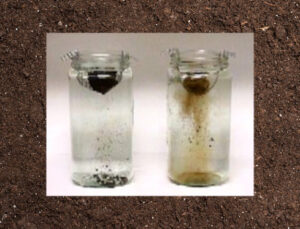
Soil organic matter is essential to healthy soils. Acting as a sort of “control center”, it regulates a soil’s physical, chemical, and biological properties. Every soil starts with a baseline level of organic matter based upon its climate and soil texture which can be increased or decreased depending upon how it’s treated. The baseline nature of the soil’s organic matter can be changed based upon how the soil is nurtured over time.
Derived from other living things, soil organic matter can be added to soils through the introduction of cover crops, plant residues, compost, or mulches. However, it can also be easily lost through intensive farm management practices, including tillage, removing all crop residues, and erosion, which take a lot out of the soil without replacing the nutrients and soil structures that were removed. In general, soil organic matter is directly related to soil health, with higher levels of soil organic matter indirectly resulting in healthier plants and better crop yields. As I explain in my July 2021 NOFA/Mass newsletter article “A Primer on Sustainable Soil Management”, soil management practices play a critical role in developing soil organic matter and the various components of soil structure essential to soil health and plant vitality.
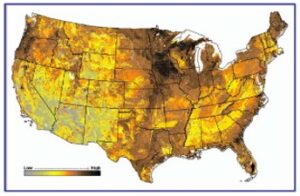
Naturally-occurring soil organic matter distribution across the United States. Darker colors represent higher levels of organic matter. Image source: USDA-NRCS STATSGO Database
For those who want to nurture organic matter in soils, it is helpful to know how much organic matter your soil has to begin with and how much it builds over time. Laboratory tests typically measure organic matter by heating a soil until the organic components burn off to calculate the weight of the vaporized, or organic, material. This provides a measurement of compounds correlated with soil organic matter, namely, soil organic carbon, in order to estimate organic matter. Since carbon is an essential component of life, a soil’s organic carbon content is closely associated with its organic matter content and soil health. Soil Carbon Proxy Testing is a field-based alternative to laboratory soil organic matter testing that provides a snapshot of soil carbon content and, subsequently, overall soil health.
Soil Carbon Proxy Testing uses indicators commonly associated with the presence of carbon to indirectly evaluate the amount of carbon within soils. Similar to how you can know there’s a songbird nearby when you hear its song, even if you haven’t actually seen the bird, there are things you can measure in carbon-rich soil (akin to the bird’s song) even if you haven’t actually measured the carbon itself (akin to seeing the bird). Certain physical, chemical, and biological components of soil, such as soil aggregates and water infiltration rate (physical), active carbon (chemical), and earthworm and root counts (biological), are highly present in soils abundant in carbon and, subsequently, organic matter. By assessing for these components, Soil Carbon Proxy Testing offers a way to quantitatively and qualitatively measure a soil’s organic carbon content, and thus soil organic matter content, through a series of field-based metrics.
The NOFA/Mass Soil Tech Team has been monitoring soil organic carbon levels on Massachusetts farms since its Soil Carbon Proxy Test protocols were first adapted by Jack Kittredge in the mid-2010’s. These low-cost on-farm tests are available to farmers and gardeners interested in knowing the overall health of their soils and hoping to associate management practices with soil organic matter and health. Soils managed to increase organic matter by minimizing or eliminating tillage, maintaining year-round soil cover, incorporating compost or green manures, and intercropping or planting a diversity of crops, are expected to have higher soil organic carbon contents than those that are managed without these proven soil-building practices.
Learning More About the Soil Test Indicators
The indicators of the Soil Carbon Proxy Test have been selected due to their collective ability to assess a soil’s organic carbon content, providing a snapshot of total soil health. The eight components of our soil carbon proxy tests are: soil surface biology, subsurface observations (soil texture, topsoil depth, root behavior, biopores), bulk density, water infiltration, slake test, earthworm count, soil hardness, and active carbon. Collectively, these components offer a comprehensive assessment of the soil’s organic carbon, organic matter, and overall health.
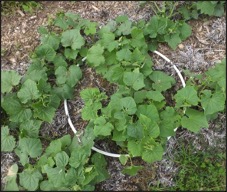
Surface biology observation hoop
- Soil surface biology assessment utilizes surface observations of a standardized area to identify the ratio between bare soil and covered soil. The amount of soil crusting, living cover, plant species diversity, and non-plant life forms are also quantified. Soil with a lot of coverage promotes better soil health, with percentages of living cover, residue, and mulch suggestive of soil health management practices. Non-plant life forms, including insects, fungi, and animal burrows, are also indicative of soil health.
- Subsurface observations are performed by digging a hole and taking a look inside to see what’s happening beneath the soil surface. The Soil Carbon Proxy Test assesses subsurface physical and biological components including topsoil depth, root depth, root sheathing, root growth behavior, biopore quantification, soil texture, and aggregate size, type, and prevalence. As I discussed in the July 2021 newsletter article, stronger aggregation, deeper and more well-branched roots, well-sheathed roots, presence of soil biopores, and deeper topsoil are all indicators of soil health.
- Bulk density testing evaluates the presence of soil pores formed through factors such as soil particle aggregation and/or earthworm activity. Bulk density can vary throughout the soil profile, so samples are typically collected at various soil depths. Soils with lower bulk densities tend to be less compacted and are generally healthier, with greater space for air, water, and plant roots, than those with higher bulk densities.
- The water infiltration test indirectly measures soil structure and potential compaction. It measures the capacity of soil to absorb water and not let it puddle on the soil surface or run off and erode sloping ground. Water infiltrates faster into healthy soils with good pores and aggregates to absorb it, and more slowly into soils that are compacted or have a lower carbon content.
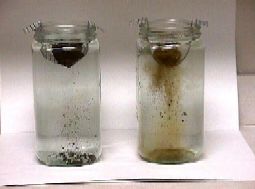
Slake test comparing well aggregated soil (left) and poorly aggregated soil (right) Image source: https://www.nrcs.usda.gov/wps/portal/nrcs/detail/soils/edu/?cid=nrcs142p2_054302
- The slake test assesses how well soil stays aggregated when submerged in water, providing a quantification of aggregate stability and erosion resistance. Slake tests are performed both in the growing area as well as in the hedgerow or other nearby undisturbed area to yield a direct comparison between disturbed and undisturbed soils from the same region.
- The earthworm count quantifies the number of earthworms in 1 cubic foot of soil. Earthworms aid in decomposing soil organic matter into soil carbon, improving plant nutrient availability, developing soil pores, and establishing and maintaining soil structure and aggregates, tightly linking them to soil carbon content and overall soil health.
- Soil hardness provides a measure of soil compaction. Soil compaction makes it difficult for plants to send roots down for growth and stability, reduces water infiltration, leading to erosion, and reduces populations of soil microbes essential to maintaining soil structure and health. Compaction is caused by intensive management strategies characterized by tillage and use of heavy equipment that damage soil pores and causes a loss of the aggregates and structure that are essential to soil health. Soil hardness is measured using a penetrometer in both the growing area and hedgerow for comparison; most crops cannot send roots into soils requiring penetration pressure of 300 pounds/square inch (psi) or greater.
- The active carbon test quantifies the amount of carbon in the soil organic matter that is available as a ready food source for soil microbes. Active carbon levels are strongly correlated with total organic carbon levels in soil. The test is performed by evaluating the color change in potassium permanganate after mixing with a soil sample, with the degree of color change corresponding to the amount of active carbon within the sample.
In addition to broadly offering the Soil Carbon Proxy Tests to the Massachusetts farming and gardening community, we have recently been working to expand the breadth of our testing to other northeastern states. In conjunction with funding from the United States Department of Agriculture (USDA), the Sustainable Agriculture Research and Education program (SARE), and the Massachusetts Department of Agricultural Resources (MDAR), we have been both training other NOFA chapters on Soil Carbon Proxy Testing procedures and developing longitudinal studies of soil organic carbon changes for farmers participating in the projects over a span of several years.
The SARE longitudinal study was developed with the goal of demonstrating that farmers can better increase soil carbon once they have had their soil tested and can subsequently work with the results to improve management practices. As a part of the project, the NOFA/Mass Soil Tech Team interprets and reviews Soil Carbon Proxy Test results with the farmers as they work to improve soil health through management changes. Three Northeastern farms: Simple Gifts in Amherst, MA, Grindstone Farm in Pulaski, NY, and Massaro Farm in Woodbridge, CT, have been participating in the multi-year study that started in September 2020. The expectation is that the three partner farms will see the most immediate benefit from their Soil Carbon Proxy Testing results and corresponding management changes.
The SARE project also seeks to improve access to Soil Carbon Proxy Testing by teaching others to become proficient in performing tests. NOFA/Mass Soil Tech Team advisors have trained staff at CT NOFA and NOFA-NY in Soil Carbon Proxy Testing as a part of the project’s efforts to expand the utility of this valuable service. The goal is to increase farmers’ understanding of their soil carbon levels throughout the region, allowing them to implement management changes that can start to have beneficial impacts on their soils and the environment.
Similarly, the USDA-funded NOFA/Mass Conservation Innovation Grant (CIG) project has united 9 northeastern farmers in a learning community to discuss and evaluate no-till management techniques. Soil Carbon Proxy Testing has been performed at the 9 farms since the project’s inception in 2018, establishing a baseline level of soil carbon at each farm as well as annually testing for changes in response to reductions in tillage. This multi-year project concludes this fall. Stay tuned for our findings on the effects of soil management on soil organic carbon at our participating farms. For more information about the CIG project, please visit: https://www.nofamass.org/nofa-conservation-innovation-grant-nrcs-project/.
NOFA/Mass’s newest soil carbon project is the MDAR-funded Compaction Mitigation Grant, which aims to help farmers both detect and alleviate soil compaction, plowpan problems, and other structural issues. This project builds upon Soil Carbon Proxy Testing by specifically emphasizing the physical components of the Test that are not as well understood by farmers. Initial Soil Carbon Proxy Tests were performed at the seven participating farms in Spring 2021 to create a baseline-level assessment of total soil organic carbon; these data will be supplemented with twice-annual soil hardness, infiltration rate, bulk density, and topsoil depth measurements to evaluate management impacts on compaction. Throughout the project, farmers will be participating in a learning cohort to facilitate peer-education on soil management practices and to help encourage management changes that will improve soil health.
The NOFA/Mass Soil Tech Team has recently been revisiting the Soil Carbon Proxy Test protocols and will likely be making modifications in Fall 2021 to reflect a greater emphasis on testing for whole soil health in addition to metrics specifically targeting soil organic carbon. Future offerings will likely include a modified Soil Carbon Proxy Test framed specifically as a holistic Soil Health Assessment, and may possibly include Soil Biological Analysis and Soil Remediation services.
Soil organic matter and organic carbon are created through holistic soil management strategies that encourage year-round soil cover, organic nutrient additions, crop diversity and regular rotations, and biological diversity. The NOFA/Mass Soil Tech Team works to help farmers and gardeners better understand their soil and how management practices impact soil organic matter, organic carbon, and overall soil health. To learn more about scheduling a Soil Carbon Proxy Test through the NOFA/Mass Soil Tech Team, or for information about any of the other soil services we offer, please visit our webpage.
This material is based upon work supported by the National Institute of Food and Agriculture, U.S. Department of Agriculture, through the Northeast Sustainable Agriculture Research and Education program under subaward number ONE20-378.

